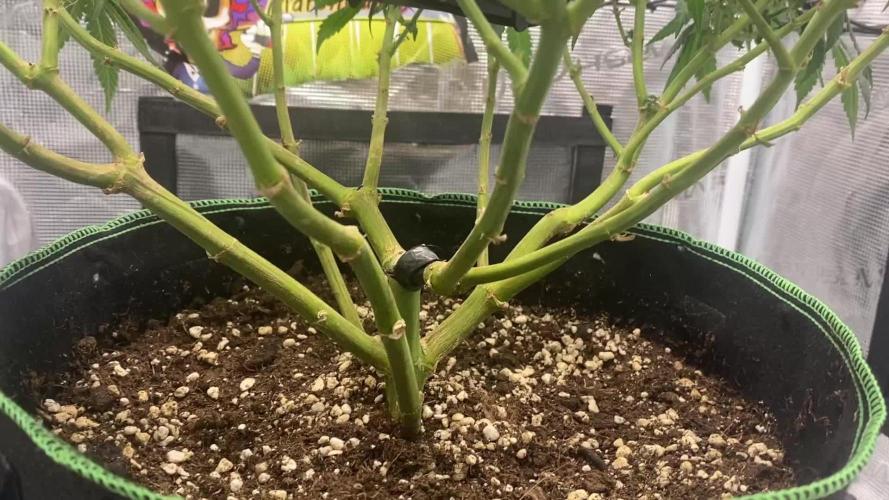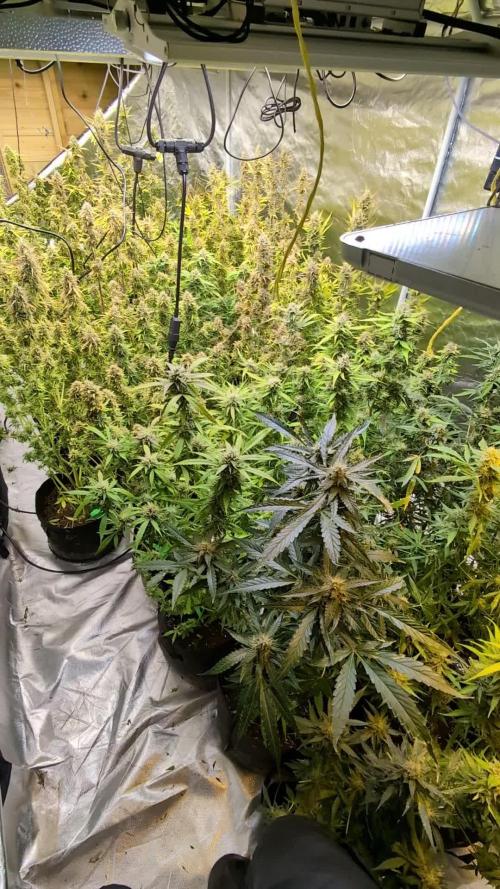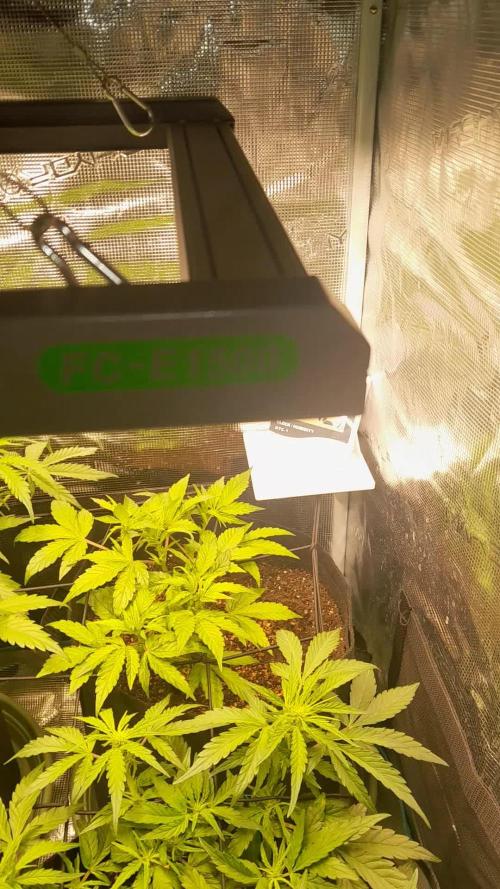The Grow Awards 2026 🏆 



































Likes
Comments
Share


@Unkraut
Follow
i looked awesome all growcycle...i streched alot & i noticed it drank alot more then the other plants while growing...had a good yield, i´m very happy overall
Likes
11
Share


@Grow_Outside
Follow
Die Purple Lemonade FastFlower steckt aktuell ihre ganze Power in ihre Buds. Sie sieht einfach Mega geil aus, jedesmal wenn ich ins Zelt schaue, fasziniert sie mich 💚
Likes
6
Share


@Eldorado_ed
Follow
Really struggled with temps this week it’s has been way to hot managed to get down a little but tbh it was a hard week never thought I would get this in Scotland with the majority of time being wet windy and cold. Tried everything to get temps down but the heat was everywhere😩 sooooooo what do ye all think ready or not
Likes
22
Share


@Betagemini
Follow
Day 82. (1.8.) She have very nice smell like berries, spicy and flowery. I bough multipurpose magnifier today. Some trichomes are still clear so I'll give her 10 - 14 days.
Likes
6
Share


@Grumpygrower121
Follow
It is interesting to see how much the plant has grown since I switched lights 7 days ago.
#6& #7 have grow in height while #8 has filled out more
Started weaving #6& #7.
#8 is still 1" from trellis. I am going to set next trellis by end of week.
Turned up RED/IR/UV to 50%
Feed plants
9-18-22 Day 8
WOW ,I can not believe the growth since yesterday! The plants easy grew 1"-2" !
Decided to put second trellis in this morning!
Feed plants
9-19-22 Day 9
Plant #7 & #8 are close to reaching the second trellis.
#6 is just now starting to reach the first trellis.
However the hight difference between #6,#7 & #8 is really just 2"-3". Should be able to fill fairly evenly.
9-20-22. Day 10
Feed plants this morning. The plants look green and healthy.
The plants are staring to grow white pistons and showing signs of flowering!
9-21-22 Day 11
#7 & #8 have mostly reaches the second trellis
#6 is past the first trellis will be interesting to see if it will reach the second
All 3 plants are now showing signs of Flower.
9-22-22
💧
#6 - Ethos Cookies #16 & Grandpa's Stash
#7 - Ethos Cheezy Puff
#8 - Ethos Planet of the Grapes
Likes
8
Share


@Roberts
Follow
Fast version B is doing good. She is just vegging along. She should be showing her maturity here in the coming weeks. Then we can get her to a flowering room when it's open. Thank you Dutch Passion, SSSC, Medic Grow, and Athena. 🤜🏻🤛🏻🌱🌱🌱
Thank you grow diaries community for the 👇likes👇, follows, comments, and subscriptions on my YouTube channel👇.
❄️🌱🍻 Happy Growing 🌱🌱🌱
https://youtube.com/channel/UCAhN7yRzWLpcaRHhMIQ7X4g.
Likes
27
Share


@Dreamchvser
Follow
Day 49
Plants had a little transplant shock from last week as they didn’t really grew much taller.
I’m not 100% satisfied with how the veg stage went so far, but I learned a lot and will do better next time.
I attached some gardening wire to some of the branches to create a more even canopy.
Haven’t watered since last Saturday (transplant) as the soil is still wet and starts to dry out slowly now.
Most likely I’ll flip them into flower in 2 weeks around Day 63.
I appreciate every advice 🙏🏾
Likes
285
Share


@Tropicannibis_Todd
Follow
👉Alrighty Then👈
( 👉Bonus Video Showcases Everything I Have Going on in TropiCannibis HQ 👈)
So we are at DAY 63 of Flowering with the Sugar Larry 👈 And she's doing fantastic 👍
😀 decided to showcase pheno #2 , definitely has different traits then #1 very interesting 😀 thoe both are killing it 👈
So just waiting on alittle more amber to show before we do the chop 👌
👉I had to Top her during the middle of 4th week 👍 Happy Growing
👉Soil Provided by ProMix.ca
👉Nutrients Provided by Agrogardens
👉Lighting Provided by MarsHydro.ca
Thanks my friends for the great support over the years 🙏 Happy Growing
Likes
2
Share


@Grownewgenetics
Follow
We love the testing of these American strains, i can just recommend the 2 FAST 4 BUD'S Genetics, the auto Strains haven't for the price and the quantity the other's seedbank in test behind and they stay on first place together with sweetseeds, but like i say , testing isn't finish jet
Processing
Likes
24
Share


@DaddyPrime
Follow
9/2 allowin showing colors finally, getting purple I some fanleaves, she's smelling super sweet like berries
9/4 she's getting so so frosty. Shes growing/budding like a typical sativa. Super Long slender nugs with ridiculous amounts of frost/crystals covering all surrounding sugar leaf. Yet still small and slender actual bud formation. I am very impressed by the resin production so far though. (Sativas always look Impressive(crystals) but lack actual bud structure)
Watered and introduced beastie bloomz to the mix instead of open sesame. Hoping to pack on extra weight.
On a side note: the clone from this plant is flowering as well. I have limited the addition of most nutrients besides what was already in the soil. Its cool to note that the clone that hasnt been fed flowering nutes like the mother plant has, is lacking in smell, color and resin production, in comparison between feeding with open sesame vs not feeding besides water as needed. Its not surprising but i love seeing the proof
Likes
4
Share


@Mrgreenthump68
Follow
40l bowls with new living soil mix 10%
4 plants in a tent with mars hydro FC-6500
4 plants in a tent with 2 SANlight 5 150
Ab heute laufen die Tests der Lampen die für zukünftige Grows benutz werden könnten
Likes
5
Share


@DrShotzUK
Follow
Wow well we’re do I start.
Absolute dream to grow
Smelt strong of citrus and oranges , was amazing to smell ,
After just 5 days of drying and 1 week of curing the result was imense.
Absolute knockout weed with an orange taste and a smooth on the throat.
One of the best I’ve taste. Highly recommend
Likes
6
Share


@smoking_hills9
Follow
Last final defoliation done, now buds are fully exposed to the lights and the best part, harvest trim will be easier. Still it took me around 8 h altogether to defoliate all of them. Tones of buds and frost , amazing smells. Won't rush will give it a bit more to swell.
Likes
9
Share


@Headies
Follow
So I had a few issue. I over watered early on, took them out the seed tray early, started feeding them a week or two late, no humidifier yet but they recovered well.
Likes
24
Share


@Ganjaman19
Follow
Vegetation over end of week 8 I'm really happy with how these look I've ended up with 8 I'm happy to put into flower they are all different strains and range in size from 90cm to 120cm the strains are
Barney's farm
Wedding Cake
Pink Kush
Mimosa Evo
Runtz Muffin
Divine seeds
Divine Indica
Opium
Anesia seeds
Banana Kush
Pink Starburst
The feed I've used is great I really like this range and would recommend it to any grower and its all I will be using along with the Monkey Nutrients range these for me are the best European and UK Nutrients well worth anyone's money
I will be defoliating and lollipopping them soon so I can get as much exposure as possible
Also some of my cuttings have rooted so I can help my friend out I switched to Clonex rooting gel and have had some luck so I'm really happy (see pics)
Thanks for the help along this journey and thanks always to my sponsors
@HydroproWashington
@anesiaseeds
@Divineseeds
@monkeynutrients
See yous all next week with some better photos of each plant before and after some much needed defoliation
Peace out
Likes
47
Share


@Mrs_Larimar
Follow
Friday, january29th
The Girls starting Week 3
Today I had alot of Work
I was resetting the Tent
( 2nd. cleaning and setting up Humidifier an Controller)
I topped them days before.
They are growing so vigor, I cant believe that they stay small... but we will see
I was looking at serveral Grows, and the 3G tend to stay asmall Bushy Plant
I amended the Soil with EASY BOOST ORGANIC NUTRITION
I took the recommended Amount , In my case alittle more than 50g
I know that Product, and took this time a higher amount, Than last Time
last Time I took only 25g in 11l Pots
But these Girls look like heavy eaters
That means they should have ll they need for the Upcoming Weeks
Ijust watering them with some Beneficals from @GreenBuzzLiquids
Further Thoughts
I try to create aPlnat with 8 colas and then send them into Flower
Conclusion of the Week
Week 1: All Seeds show up and growing Vigor
Week 2: Topped the Girls, very good Grower
Week 3: Second Cleaning of Setup, setting up the Tent, Transplanting the Ladies
If you want to buy the Light or the Tent, here are the Links:
Light: http://bit.ly/marshydro-sp3000
Tent: http://bit.ly/marshydro-120x60tent
Likes
17
Share


@eldruida_lamota
Follow
Venga familia que ya viene la cosecha de estas finta F1 de ZamnesiaSeeds, que ganas que tenia ya de darles machetazo, me estaban dando muchos quebraderos de cabeza.
Las flores no son para nada llamativas, una variedad más cruzada con rudelaris, que para mi gusto es perder el tiempo y el dinero invertido en cultivar cosas así… no merece la pena en interior, el ratio de gramo watio se me quedó en 0.5 , de los no peores resultados que tuve en los últimos 5 años.
a sido una genética con la que no disfruté nada cultivarla, es complicada, es bastante sensible.
Las plantas en sí se quedaron enanas y para nada fue lo que esperaba, me recordaron a las autos que plantaba en el 2012…
Agrobeta:
https://www.agrobeta.com/agrobetatiendaonline/36-abonos-canamo
Mars hydro:
Code discount: EL420
https://www.mars-hydro.com/
Hasta aquí es todo , espero que lo disfrutéis, buenos humos 💨💨.
Likes
7
Share


@DrewbieDoobieNoobie
Follow
the ladies can drink at least the 4 big girls can. the 2 smaller ones are coming along and of the 2 there is 1 runt of the litter. but it should be oj as well maybe make hash of the smaller 2 we will see.
it is getting a little hot and humid in the tent. time to add some CO2 and turn on the dehumidifier to bring it back to 45 % RH during flower. enjoy the time lapse.
see ya next week.























